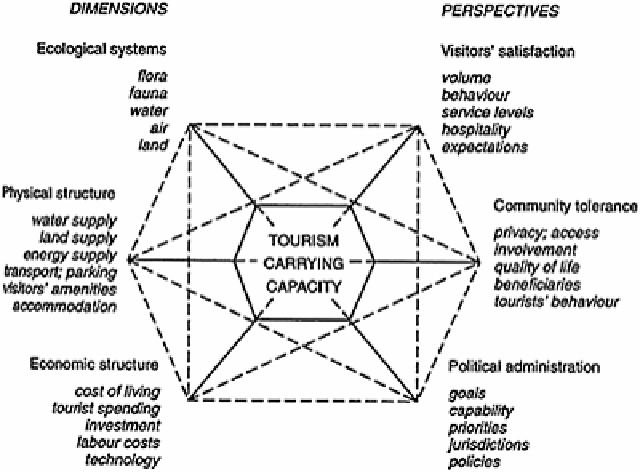Environmental Engineering Reference
In-Depth Information
also a need for more capacity building of EIA expertise, plus relevant research, including,
for example, more comparative studies and longitudinal studies (following impacts over a
longer life cycle—moving towards adaptive EIA).
Figure 11.3
Carrying capacity—a
tourism example. (
Source:
Glasson et
al. 1995.)
11.4
Extending EIA to project operations: environmental
management systems and environmental audits
An environmental management system (EMS), like EIA, is a tool which helps
organizations to take more responsibility for their actions, by determining their aims,
putting them into practice and monitoring whether they are being achieved However, in
contrast with the orientation of EIA to future development actions, EMS involves the
review, assessment and incremental improvement of an
existing organization's
environmental effects. EMS can thus be seen as a continuation of EIA principles into the
operational stage of a project.
EMS has evolved from environmental audits, which were first carried out in the 1970s
by private firms in the USA for financial and legal reasons as an extension of financial
audits. Auditing later spread to private firms in Europe as well and, in the late 1980s, to
local authorities in response to public pressure to be “green”. In the early 1990s
environmental auditing was strengthened and expanded to encompass a total quality

Search WWH ::

Custom Search